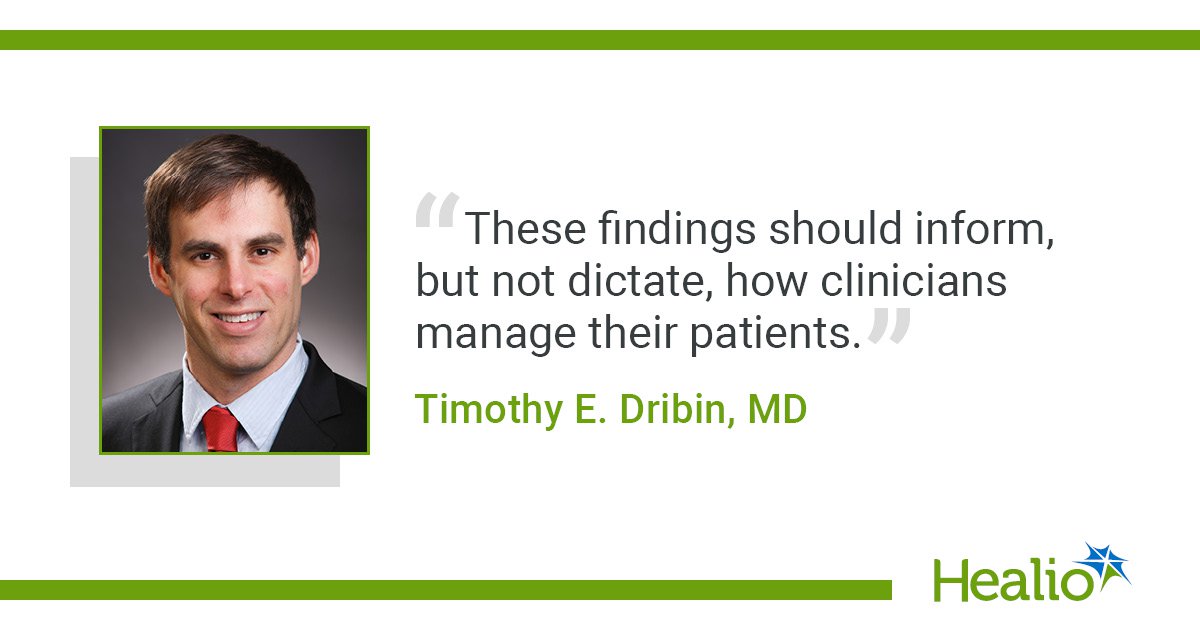August 08, 2025
4 min read
Key takeaways:
- The number of children who received repeat epinephrine dropped as time passed since the first dose.
- About 95% of children could have been safely discharged once 2 hours passed since their first epinephrine dose.
When caring for children who present to the ED with an acute allergic reaction requiring epinephrine, an observation time of 2 hours was enough for a safe discharge in 95.3% of patients, according to study results.
These findings were published in The Lancet Child & Adolescent Health.

“Most children with anaphylaxis are still observed for 4 hours or more,” Timothy E. Dribin, MD, associate professor, department of emergency medicine, Cincinnati Children’s Hospital Medical Center, told Healio. “These findings should inform, but not dictate, how clinicians manage their patients.
“I believe that for less severe reactions, observation for 2 hours is sufficient, provided there are no persistent symptoms, a backup epinephrine device is available and the caregiver feels comfortable administering it if needed,” Dribin said.
In a multicenter, retrospective cohort study, Dribin and colleagues evaluated 5,641 children/adolescents (median age, 7.9 years; 56.1% boys) who presented to the ED with an acute allergic reaction treated with intramuscular, subcutaneous or intravenous epinephrine before ED arrival or in the ED to uncover the optimal length of observation by initial reaction severity using timing of repeat epinephrine administration.
“Currently, anaphylaxis guidelines state that there are insufficient data to determine how long children with anaphylaxis should be observed after treatment with intramuscular epinephrine,” Dribin told Healio. “Consequently, children may be observed for unnecessarily long periods or even hospitalized when they do not need to be.”
Within this population, 4,076 patients had respiratory but no cardiovascular involvement, 1,070 had no respiratory or cardiovascular involvement and 495 had cardiovascular involvement.
As time passed since the first dose, researchers found that the number of patients who received a repeat epinephrine went down from 263 (4.7%) after 2 hours to 109 (1.9%) after 4 hours, 64 (1.1%) after 6 hours and 46 (0.8%) after 8 hours.
Considering all patients, 115 minutes was observed as the time when the increase in cumulative incidence of repeat epinephrine was less than 2%. Noting that only 5% of patients received repeat epinephrine after this point, researchers said 95.3% of patients could have been safely discharged once 2 hours passed since their first epinephrine dose. Additionally, once 4 hours passed, 98.1% of patients could have been safely discharged.
According to the study, the above timing was slightly shorter among patients without respiratory or cardiovascular involvement (105 minutes) and patients with only respiratory involvement (109 minutes).
“We found that for patients without respiratory or cardiovascular involvement, most can likely be observed for 2 hours or possibly less, depending on provider and patient comfort,” Dribin told Healio. “This finding was not surprising, as it aligns with clinical practice: patients with mild initial reactions tend to respond well to epinephrine and rarely show recurrent symptoms requiring additional doses after the initial administration.”
In the set of patients with cardiovascular involvement, researchers found 161 minutes as the time when the increase in cumulative incidence of repeat epinephrine was less than 2%, which is the longest time of the assessed severity groups but still less than 4 hours.
“The most surprising finding was that even for patients with more severe reactions involving the respiratory or cardiovascular systems, the likelihood of receiving repeat epinephrine was low 4 hours after the initial dose,” Dribin told Healio.
When evaluating the odds for repeat epinephrine receipt, researchers observed elevated likelihoods among those with severe cardiovascular involvement (OR = 3.18; 95% CI, 2.35-4.17) and those with severe respiratory involvement (OR = 1.47; 95% CI, 1.16-1.84).
Notably, epinephrine use before the ED raised the odds for repeat epinephrine receipt in those without respiratory or cardiovascular involvement (OR = 3.43; 95% CI, 2.05-5.78), those with only respiratory involvement (OR = 5.03; 95% CI, 4.05-6.24) and those with cardiovascular involvement (OR = 4.06; 95% CI, 2.41-6.63), according to the study.
Another factor researchers found that increased the odds for repeat epinephrine receipt in each severity group was ED steroid use (without respiratory or cardiovascular involvement, OR = 4.13; 95% CI, 2.21-7.43; with only respiratory involvement, OR = 2.12; 95% CI, 1.67-2.63; with cardiovascular involvement, OR = 2.67; 95% CI, 1.54-4.65).
A history of severe anaphylaxis heightened the odds for repeat epinephrine receipt in two severity groups: those without respiratory or cardiovascular involvement (OR = 4.33; 95% CI, 1.5-10.23) and those with cardiovascular involvement (OR = 10.27; 95% CI, 3.09-82.37).
Factors that raised the odds for repeat epinephrine receipt in only one severity group included asthma controller medication use in those with only respiratory involvement (OR = 1.58; 95% CI, 1.21-2.07) and a history of anaphylaxis to the current trigger in those with cardiovascular involvement (OR = 2.6; 95% CI, 1.03-6.12).
“We are currently enrolling in a prospective study that, beyond examining the timing of repeat epinephrine, also investigates the duration and recurrence of symptoms,” Dribin told Healio. “These are important outcomes that can help determine appropriate observation periods. We hope this study will enhance our understanding of how to manage patients with anaphylaxis.
“Additionally, I believe conducting a similar study in adult patients could be beneficial to establish whether they require similar or different management, especially considering potential underlying conditions that might influence the severity of their reactions,” Dribin added.
Reference:
For more information:
Timothy E. Dribin, MD, can be reached at timothy.dribin@cchmc.org.










